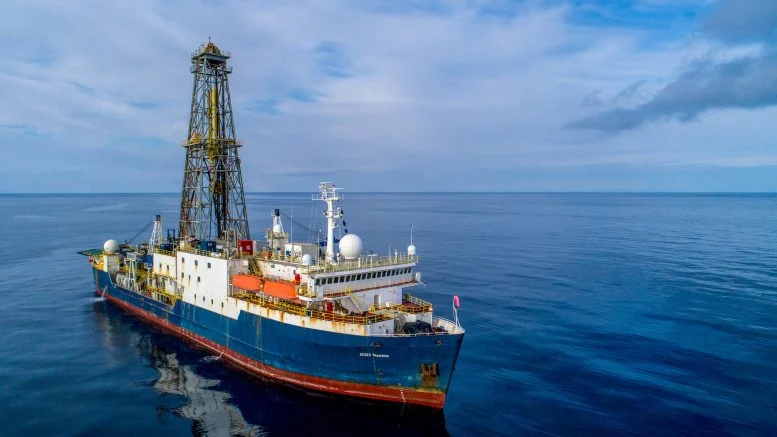Ocean sediment cores reveal climate-related fluctuations in the Antarctic Circumpolar Current in past epochs. The Antarctic Annular Current significantly affects the global overturning circulation, the exchange of heat and CO2 between the ocean and the atmosphere, as well as the stability of the Antarctic ice sheets. A global collaborative research team led by the Alfred Wegener Institute and the Lamont-Doherty Earth Observatory analyzed sediments from the South Pacific Ocean to reconstruct current velocities over the last 5.3 million years.
Their data show that the flow slowed during ice ages; accelerated during interglacial periods. So if current global warming increases in the future, this could mean that the Southern Ocean will store less CO2 and more heat will reach Antarctica. The research was recently published in the journal Nature .
What carries 100 times more water than all the rivers in the world combined, is 2000 kilometers wide at its widest point, and extends into the deep sea? Antarctic Circumpolar Current (ACC). In the past, the most powerful system of ocean currents on Earth was subject to significant natural fluctuations, as recent analyzes of sediment cores show. Colder phases in the Pliocene and later Pleistocene, when the ACC slowed down, are associated with the advance of the West Antarctic Ice Sheet. During the warmer phase, the ACC accelerated and was accompanied by ice sheet retreat.
D., a researcher at the Department of Marine Geology at the Alfred Wegener Institute at the Helmholtz Center for Polar and Marine Research (AWI) and first author of the study. “This ice loss can be explained by increased southward heat transfer,” says Frank Lamy. to work. nature. “Stronger ACC means warmer deep water reaching the edge of Antarctica’s ice shelf.”
Climate change response and data collection
“The ACC has a major impact on heat distribution and CO2 storage in the ocean. Until recently, it remained unclear how the ACC responds to climate fluctuations and whether changes in the ACC offset or amplify the effects of warming,” says Lamy. “Therefore, to improve predictions of our future climate and the stability of the Antarctic ice sheet through computer simulations, we need paleodata that can tell us something about the intensity of the ACC during past warm phases in Earth history.”
To collect these data, in 2019 an international expedition led by Lamy and geochemist Gisela Winkler of Columbia University’s (USA) Lamont-Doherty Earth Observatory traveled to the central part of the South Pacific Ocean on a drilling ship. JOIDES Resolution. There, in the sub-Antarctic region, the research team extracted two large drill cores collected at a depth of 3,600 meters. Professor Helge Artz, marine geologist at the Leibniz Institute, explains: “The drilling sites are located near Point Nemo, the farthest point from any land or island on Earth, where the ACC flows without any influence from continental landmasses.” for Baltic Sea Research in Warnemünde and is one of the main authors of the study. “Using sediments from this region, we can reconstruct the average flow rate in the past.” Ocean sediment cores reveal climate-related fluctuations in the Antarctic Circumpolar Current in past epochs.
Background: Antarctic Environmental Current
The Antarctic Circumpolar Current (ACC), a circular current flowing clockwise around Antarctica, connects the Atlantic, Pacific, and Indian Oceans. It therefore plays an important role in global ocean circulation and, through the Atlantic Conveyor, ultimately influences the climate in Europe. Under the influence of the strong westerly winds of the subantarctic region, as well as the difference in temperature and salinity between the subtropics and the Southern Ocean, the ACC forms a barrier for the warm surface waters of the subtropics on the way to Antarctica. At the same time, relatively warm deep waters from the Atlantic and Pacific Oceans also flow into it.
Large ocean eddies that form in the ACC and move southward with rising deep waters transport heat to ice shelves at the continental margin, particularly in the Pacific region of Antarctica. In addition, the upwelling created by the ACC brings nutrients to the surface that promote algal growth, while also increasing the export of biological carbon to the deep sea and the transport of CO2 released into the atmosphere.
Source: Port Altele
